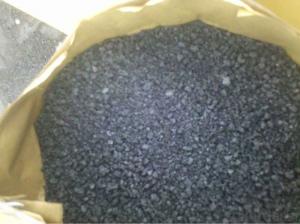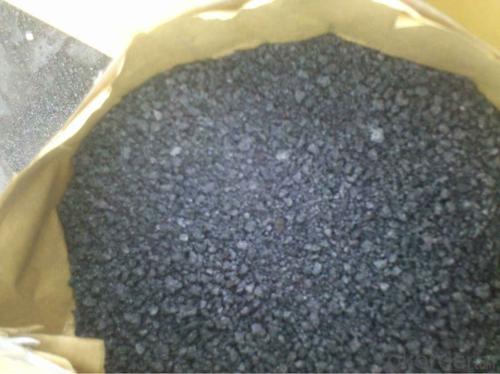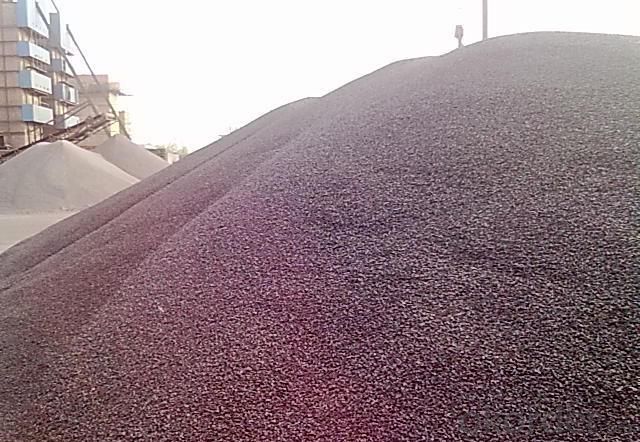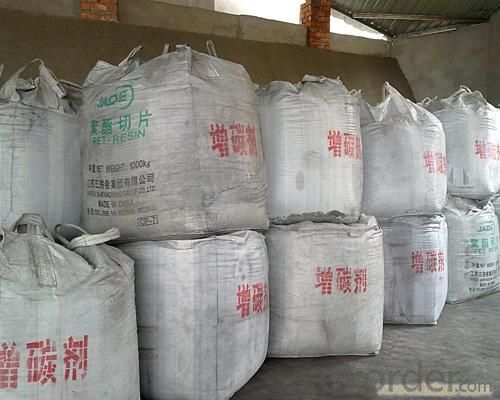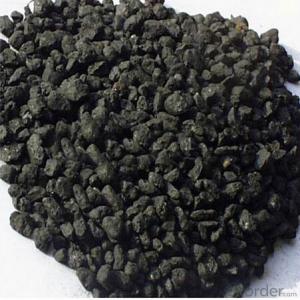FC93Gas Calcined Anthracite/CNBM China GCA
- Loading Port:
- Tianjin
- Payment Terms:
- TT OR LC
- Min Order Qty:
- 0 m.t.
- Supply Capability:
- 100000 m.t./month
OKorder Service Pledge
OKorder Financial Service
You Might Also Like
Packaging & Delivery
| Packaging Detail: | 25kgs/50kgs/1ton per bag or as buyer's request |
| Delivery Detail: | Within 20 days after receiving corect L/C |
Feature
All of our goods are made in the best quality of world famous Tianjin. All of our products are with High carbon, Low ash, low sulphur, Low Moisture.
Usage
The Calcined Anthracite Coal/Gas Calcined Anthracite Coal/Carbon Raiser is mainly used in steelmaking in electrical stove, screening water, shipbuilding sandblast to remove rust. It can reduce the cost of steelmaking effectively by replacing the traditional petroleum coke of carburant.Also can improve the Carbon content in steel-melting and Ductile iron foundry.
Specifications
Calcined Anthracite
Fixed carbon: 90%-95%
S: 0.5% max
Size: 0-3. 3-5.3-15 or as request
PARAMETER UNIT GUARANTEE VALUE | |||||
F.C.% | 95MIN | 94MIN | 93MIN | 92MIN | 90MIN |
ASH % | 4MAX | 5MAX | 6MAX | 7MAX | 8MAX |
V.M.% | 1 MAX | 1MAX | 1.5MAX | 1.5MAX | 1.5MAX |
SULFUR % | 0.5MAX | 0.5MAX | 0.5MAX | 0.5MAX | 0.5MAX |
MOISTURE % | 0.5MAX | 0.5MAX | 0.5MAX | 0.5MAX | 0.5MAX |
Size can be adjusted based on buyer's request.
Picture
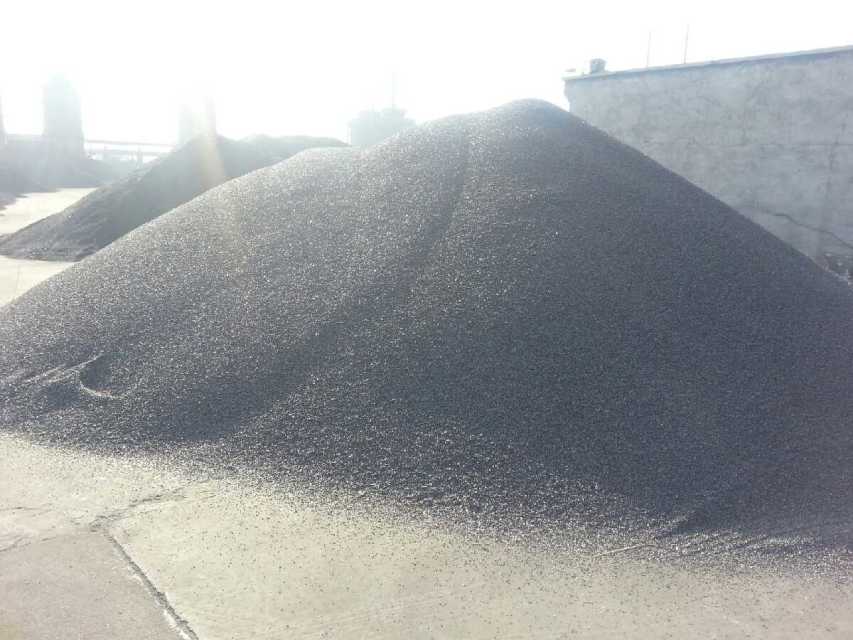
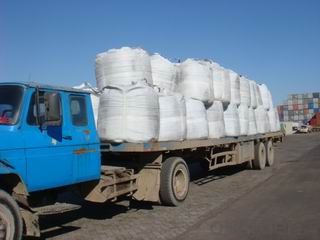
- Q: What are the effects of carbon emissions on the stability of volcanic regions?
- The stability of volcanic regions can be influenced by both direct and indirect effects of carbon emissions. At first glance, the direct impact of carbon emissions on volcanic areas seems relatively insignificant. Volcanic eruptions naturally release carbon dioxide (CO2), so the additional emissions from human activities may not have a significant individual effect on the stability of volcanic regions. However, the increased levels of carbon dioxide in the atmosphere can contribute to climate change, which can indirectly affect volcanic activity. Indirectly, the stability of volcanic regions can be affected by climate change resulting from carbon emissions. The rising global temperatures caused by climate change can lead to the melting of glaciers and ice caps. This, in turn, increases the amount of water on the Earth's surface. The additional weight of water in volcanic areas can potentially add pressure to magma chambers and trigger volcanic activity. Moreover, the increased water levels can result in higher levels of rainfall, which increases the risk of landslides and erosion in volcanic regions, potentially destabilizing the area. Additionally, climate change can alter precipitation patterns and create drought conditions, impacting the hydrological cycle. These changes can affect the availability of water for volcanic regions, ultimately influencing their stability. Volcanoes require water for the production of steam and pressure that can lead to eruptions. If there is a lack of water due to prolonged drought conditions, volcanic activity may decrease. However, unpredictable rainfall patterns can result in an excess of water, leading to an increased risk of flash floods and landslides that can destabilize volcanic areas. It is important to acknowledge that the effects of carbon emissions on the stability of volcanic regions are intricate and can vary based on factors such as local geology, volcanic activity, and climate conditions. Although carbon emissions may not directly cause volcanic eruptions, they can contribute to changes in climate patterns that can indirectly impact the stability of volcanic systems. Further research and monitoring are necessary to fully comprehend and quantify these effects.
- Q: Want advanced reinforcement, but I do not know where the high furnace rock carbon, looking for someone to guide...
- Landlord Hello, there are 51 bags sold in the mall, send the hope to adopt, thank you!
- Q: What is carbon sequestration and how does it work?
- The process of carbon sequestration involves the capture and storage of carbon dioxide (CO2), preventing its release into the atmosphere and its contribution to climate change. In the fight against global warming, this process is of utmost importance because CO2, as a greenhouse gas, traps heat and leads to an increase in the Earth's temperature. There are various techniques for carbon sequestration, with terrestrial, oceanic, and geological methods being the most commonly used. Terrestrial sequestration entails the capture of CO2 from the atmosphere and its storage in plants, trees, and soil. This can be achieved through afforestation, reforestation, and adopting sustainable agricultural practices that boost soil carbon storage. On the other hand, oceanic sequestration involves the storage of CO2 in the oceans, taking advantage of their natural ability to absorb and retain large quantities of CO2. By enhancing the ocean's capacity to capture CO2, for example through the use of algae or other marine plants, we can effectively decrease the concentration of CO2 in the atmosphere. Geological sequestration, meanwhile, revolves around capturing CO2 from industrial sources like power plants or factories and injecting it deep underground into geological formations. These formations, such as depleted oil and gas reservoirs or saline aquifers, serve as natural storage sites for the captured CO2. Over time, the injected CO2 becomes trapped and mineralizes, permanently storing it away from the atmosphere. Moreover, technological advancements have made it possible for carbon sequestration to occur through methods like direct air capture (DAC) and carbon capture and storage (CCS). DAC involves the use of machines or devices to directly capture CO2 from the air, while CCS focuses on capturing CO2 emissions from industrial processes before they are released into the atmosphere. Once captured, the CO2 can be transported and stored underground, either in geological formations or in depleted oil and gas reservoirs. In summary, carbon sequestration plays a vital role in mitigating climate change. By capturing and storing CO2, we can reduce the concentration of greenhouse gases in the atmosphere and help stabilize the Earth's climate. However, it is important to note that while carbon sequestration is an important solution, it should not be viewed as the sole solution. Combining carbon sequestration with other strategies for mitigating climate change, such as reducing emissions and transitioning to renewable energy sources, is crucial for effectively combating this global challenge.
- Q: Where are carbon fiber sheets and carbon fiber sheets used?
- Carbon fiber and carbon fiber cloth, carbon fiber cloth, carbon fiber woven cloth, carbon fiber prepreg, carbon fiber cloth, carbon cloth, carbon fiber fabric, carbon fiber, carbon fiber sheet (prepreg) etc.. Carbon fiber reinforced fabric is one kind of unidirectional carbon fiber reinforced product, usually made of 12K carbon fiber silk fabric. To reinforce the structure of the tensile and shear strength and seismic carbon fiber cloth, the supporting material and impregnated together using a carbon fiber composite material, carbon fiber cloth sheet excellent performance can be enhanced to form a complete system, suitable for processing the building load increasing, the engineering function change, material aging, concrete strength grade is lower than reinforcement design, structure crack treatment, environment protection and repair service component.Carbon fiber board 1) Aerospace: airframe, rudder, rocket engine shell, missile diffuser, solar panel, etc.;2) sports equipment: auto parts, motorcycle parts, fishing rods, baseball bats, skis, boats, badminton rackets and so on;3) industry: engine parts, concrete structures, reinforced materials, fan blades, transmission shaft, and electrical components and so on;4) fire: suitable for army, fire fighting, steel mills and other special high-grade fireproof clothing production.Fire rating: Class A - non flammable, standard GB8624-2006, German standard DIN4102, A1 classCivil buildings, bridges, tunnels, earthquake, reinforced concrete structure, reinforcing material for reinforcement structure, tensile shear and seismic carbon fiber cloth, the use of common materials and supporting adhesive, constitute a complete performance excellence with carbon fiber cloth material reinforcing system. The system is suitable for beams, columns, slabs, tunnels, circles, arcs, etc..
- Q: How does carbon affect the formation of earthquakes?
- Carbon does not directly affect the formation of earthquakes. Earthquakes are caused by the movement of tectonic plates and the release of accumulated stress in the Earth's crust. Carbon, however, can indirectly influence the frequency and intensity of earthquakes through human activities such as mining and fracking, which can trigger seismic events in certain circumstances.
- Q: What are the impacts of carbon emissions on the stability of estuaries?
- Estuaries, delicate and unique ecosystems where freshwater and saltwater mix, are significantly impacted by carbon emissions. One of the main consequences is ocean acidification, which occurs when carbon dioxide from human activities like burning fossil fuels is absorbed by the ocean, increasing the water's acidity. This heightened acidity has detrimental effects on estuary stability. Estuaries are home to a diverse array of marine life, including fish, shellfish, and plants. However, the increased acidity disrupts the delicate balance of these ecosystems. Many shellfish species, like oysters and clams, rely on calcium carbonate to build their shells and skeletons. In more acidic waters, the availability of carbonate ions decreases, making it challenging for these organisms to form and maintain their protective structures. Consequently, shellfish populations decline, impacting the entire estuarine food chain. Moreover, increased acidity affects the reproductive processes of many marine organisms. Fish and other species that reproduce in estuaries may experience reduced reproductive success due to changes in water pH. This decline in population numbers leads to a loss of biodiversity within estuaries. Furthermore, rising sea levels caused by carbon emissions also impact estuary stability. As global temperatures increase, glaciers and ice caps melt, causing the sea level to rise. Estuaries, often situated in low-lying coastal areas, are particularly vulnerable. Rising sea levels can increase salinity levels in estuaries as saltwater intrudes further into freshwater areas. This disruption in the delicate balance affects the survival of plants and animals dependent on specific salinity levels. In conclusion, carbon emissions have various negative impacts on estuary stability. Ocean acidification disrupts the delicate balance, affecting the reproduction and survival of species. Rising sea levels caused by carbon emissions further destabilize estuaries by altering salinity levels. To protect and preserve these valuable ecosystems, it is crucial to reduce carbon emissions and mitigate the effects of climate change.
- Q: I saw a cell phone in the magazine, the global release of 900, no camera, what function is F1 carbon fiber material, actually sold 40000 yuan a piece!.. Everyone said that the circulation is so small, worth so much money? Or carbon fiber material worth so much money?
- See where, in a car for example transformation kit, with super run even if the civil area shape roughly the same but the price difference, if you feel that things are expensive, natural carbon prices go up, in fact carbon species layout production process characteristics of professional strength lot, do not understand
- Q: What are the effects of carbon emissions on freshwater systems?
- Carbon emissions have significant effects on freshwater systems. One of the main consequences is the acidification of water bodies. When carbon dioxide dissolves in water, it forms carbonic acid, leading to a decrease in pH levels. This acidification can have detrimental impacts on freshwater organisms such as fish, amphibians, and invertebrates, as it disrupts their physiological processes and can even lead to their death. Furthermore, carbon emissions contribute to the phenomenon of global warming, which in turn affects freshwater systems. Rising temperatures can lead to increased evaporation, causing water scarcity in certain regions. This can have severe implications for both human populations and ecosystems that rely on freshwater resources. Additionally, the warming of freshwater systems can disrupt the balance of the ecosystem by favoring the growth of harmful algae blooms. These blooms are fueled by excess nutrients, such as nitrogen and phosphorus, which are often present in runoff from agricultural and urban areas. The increased temperatures coupled with nutrient enrichment can lead to the proliferation of harmful algae, which can produce toxins that are harmful to both aquatic life and human health. Moreover, carbon emissions can also indirectly impact freshwater systems through their contribution to climate change. As global temperatures rise, the melting of glaciers and polar ice caps occurs, leading to an increase in freshwater entering the system. This sudden influx of freshwater can disrupt the delicate balance of saltwater and freshwater ecosystems, affecting the distribution and migration patterns of various species. It can also lead to changes in salinity levels, impacting the survival and reproduction of marine organisms. In conclusion, carbon emissions have a range of negative effects on freshwater systems. These include acidification, water scarcity, the proliferation of harmful algae blooms, and disruptions to the delicate balance between saltwater and freshwater ecosystems. It is crucial to reduce carbon emissions and mitigate the impacts of climate change to protect the health and sustainability of freshwater systems.
- Q: How does carbon impact the availability of sustainable development policies?
- Carbon impacts the availability of sustainable development policies by directly contributing to climate change. The excessive emission of carbon dioxide and other greenhouse gases from human activities leads to global warming, which in turn affects natural resources, ecosystems, and communities. To mitigate the negative impacts of carbon, sustainable development policies aim to reduce carbon emissions, promote renewable energy sources, and encourage sustainable practices. By addressing carbon emissions, these policies help create a more sustainable future by preserving resources, minimizing environmental degradation, and fostering social and economic well-being.
- Q: What is carbon neutral tourism?
- Carbon neutral tourism refers to a type of tourism that aims to minimize or offset the carbon emissions generated by travel activities. It involves implementing sustainable practices, such as using renewable energy sources, promoting energy efficiency, and supporting carbon offset projects. The goal is to achieve a balance between the amount of carbon emitted and the amount removed from the atmosphere, thus reducing the overall carbon footprint of the tourism industry.
Send your message to us
FC93Gas Calcined Anthracite/CNBM China GCA
- Loading Port:
- Tianjin
- Payment Terms:
- TT OR LC
- Min Order Qty:
- 0 m.t.
- Supply Capability:
- 100000 m.t./month
OKorder Service Pledge
OKorder Financial Service
Similar products
Hot products
Hot Searches
